Museum of Sicilian Arts and Popular Traditions. Taormina
The museum was created with the aim of preserving and presenting to the public the products of Sicilian artisans and household items. In 1891-92, Giuseppe Pitre organized an ethnographic exhibition in Palermo, where he expressed fears that due to the industrialization and urbanization of the island, traditional Sicilian crafts were threatened with oblivion, which, in general, happened in the last century. In the twentieth century, Sicily became an object of pilgrimage for a huge number of tourists, the island gained popularity as a huge museum of antiquity, and no one thought about such trifles as household items. And only on the eve of the new millennium, thanks to the efforts of enthusiasts, museums began to appear where folk crafts were collected. This was made possible thanks to the cooperation of the state with collectors, who have the main merit of preserving the cultural heritage of Sicily.
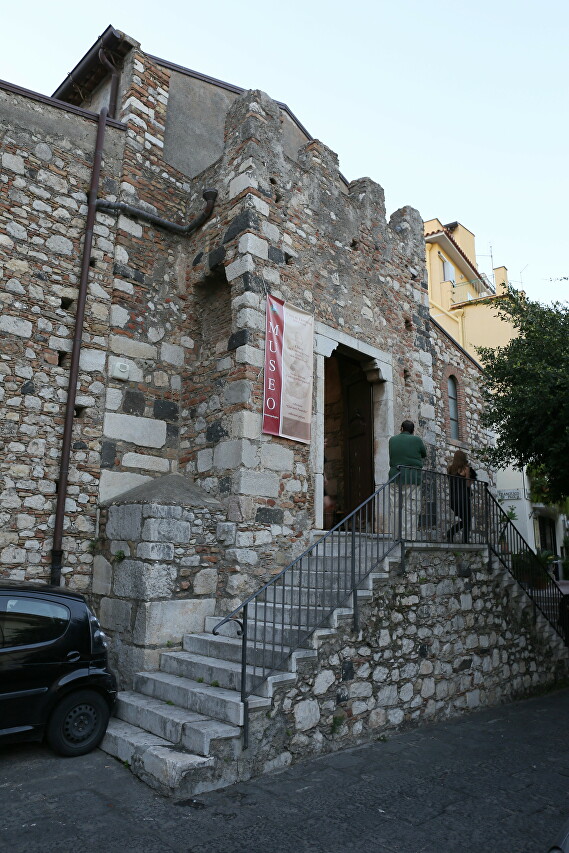
Museo Siciliano di Arte e Tradizioni Popolari was founded in 1997 and opened to the public in 1999. Initially, the exhibition occupied several rooms in the Corvaggio Palace, but the number of exhibits increased, and in 2015 it received its own building. The exhibition is located in the former church of San Francesco di Paola.
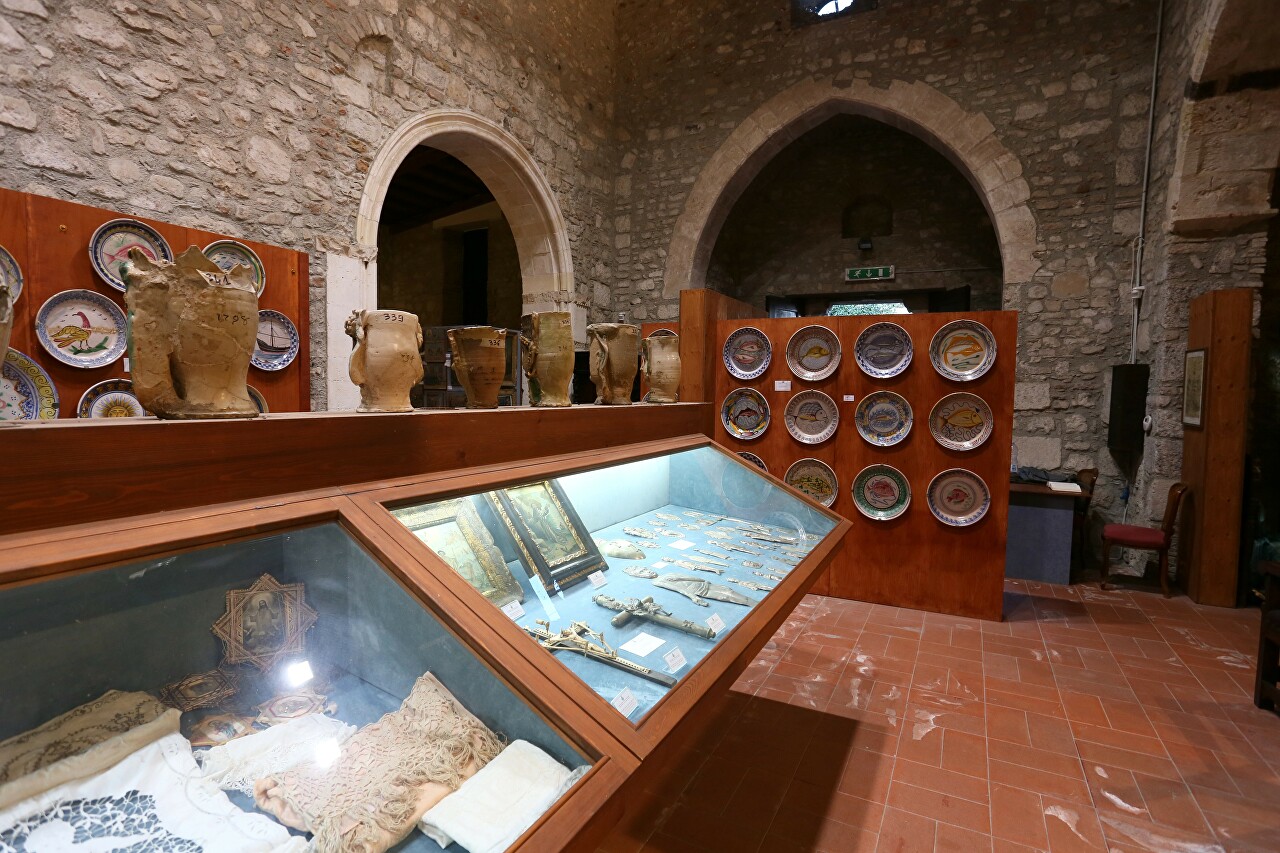
Now one of the most important art and anthropological museums in Sicily, it has about 500 exhibits, giving visitors information about Sicilian crafts from the 1600s to the first half of the 20th century. Much credit for the creation of the museum belongs to the antiquarian Giovanni Panarello, who preserved many rarities and in 2006 ceded his collection to the city of Taormina.
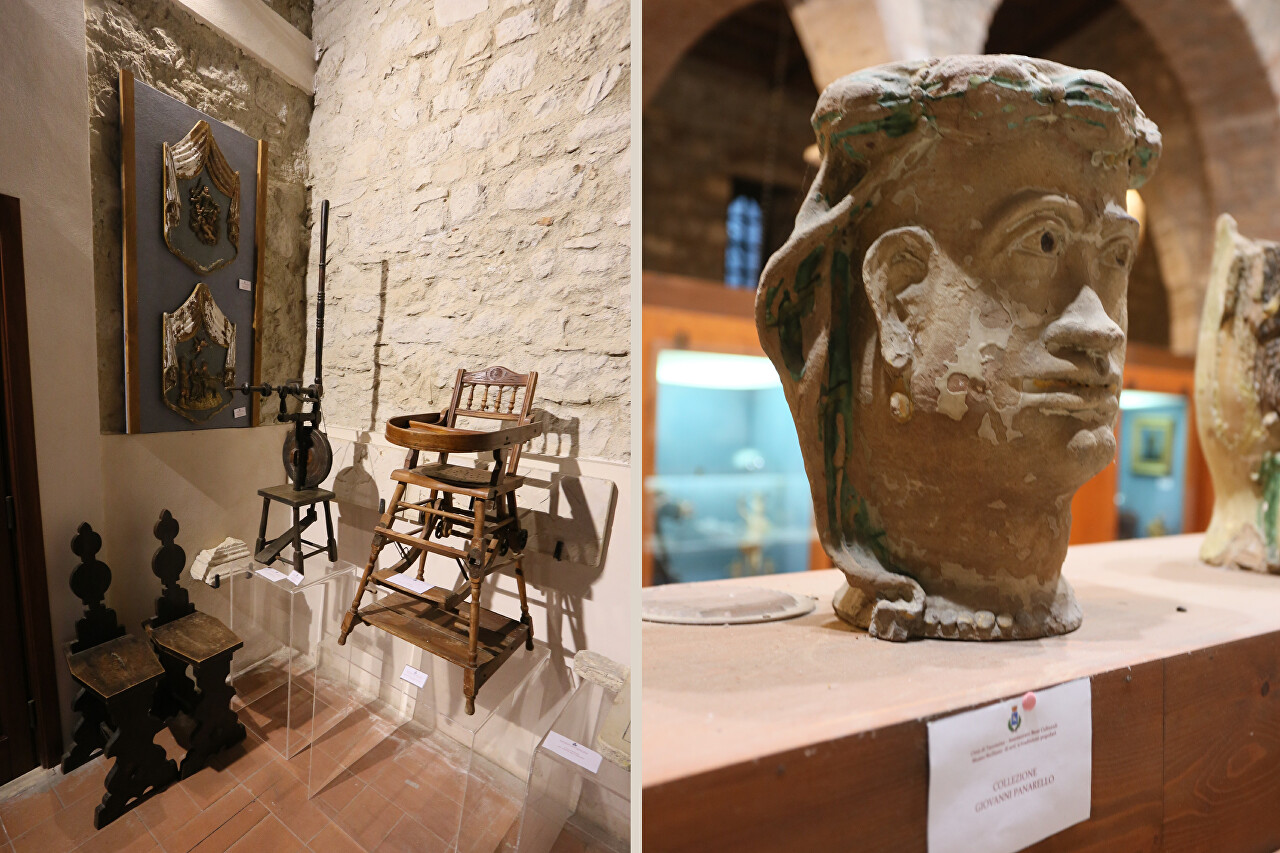
Here you will see family portraits of Taormina residents by provincial artists, which have not lost their relevance even with the advent of photography.

Model of a Sicilian cart (Sarettu Sicilianu). This is a real piece of art!
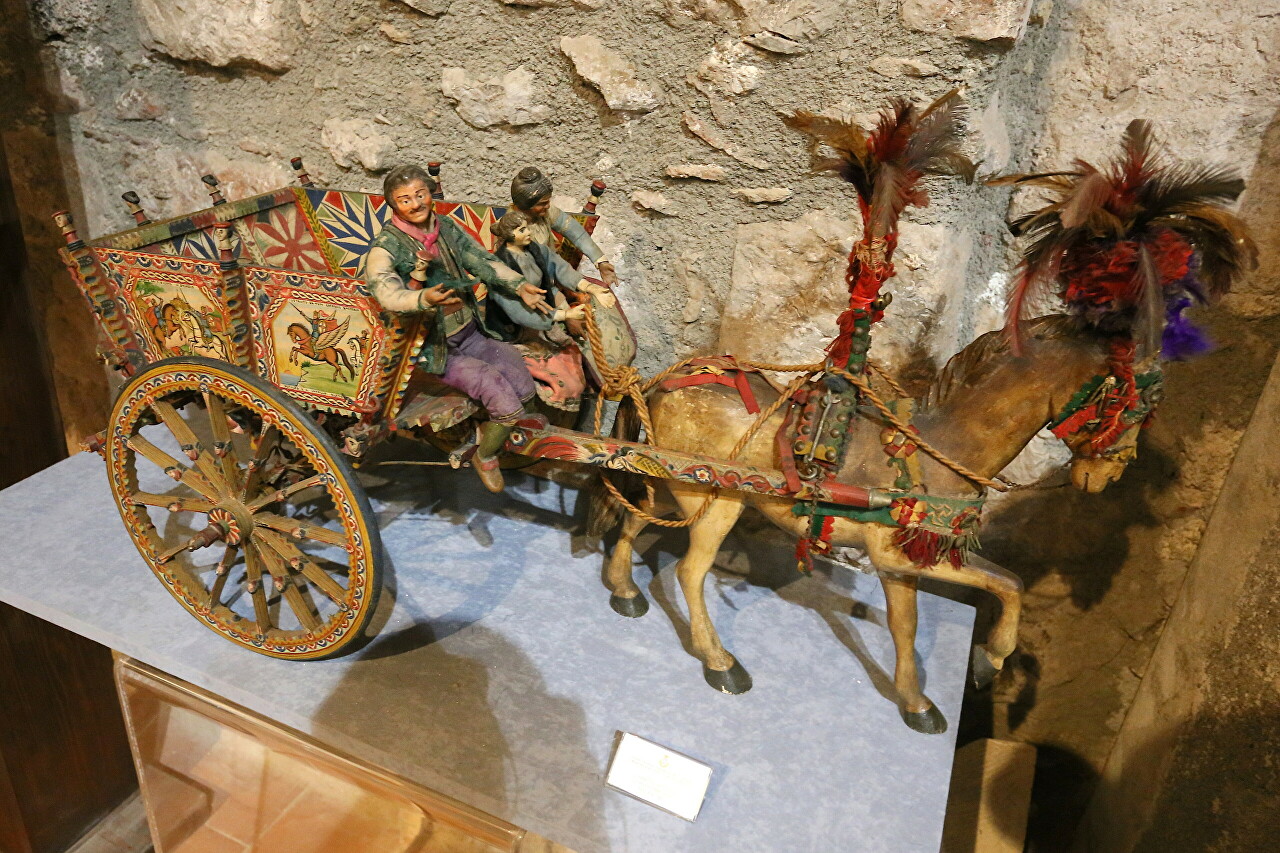
Wooden polychrome bas-reliefs placed at the rear were unique for each vehicle, performing the functions of modern license plates, as well as giving some information about the occupation of the owner of the cart.
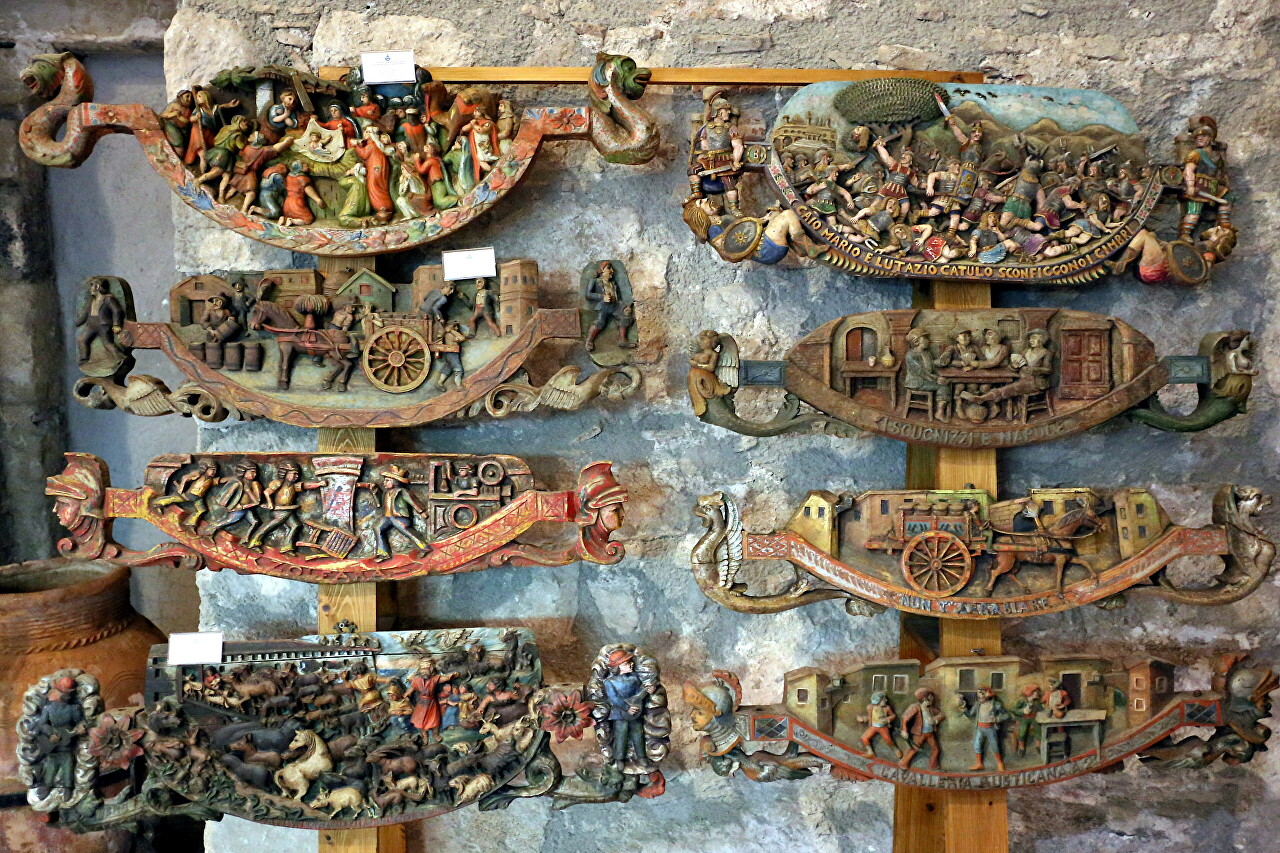
The main technological trick of the Sicilian cart is a metal device that emits a melodious ringing when moving, also individual for each product.
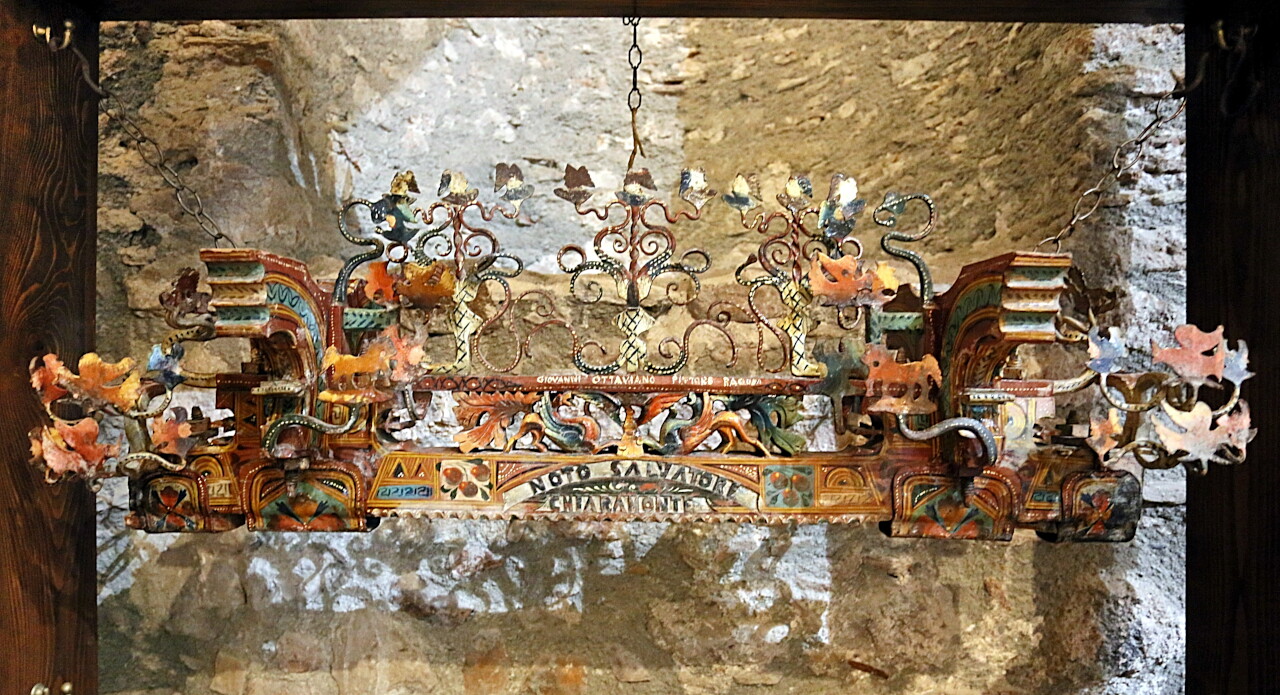
Lace and embroidery have long been used in the national costumes of the Mediterranean peoples, this craft is passed down from generation to generation, and Sicilian lace is known all over the world.
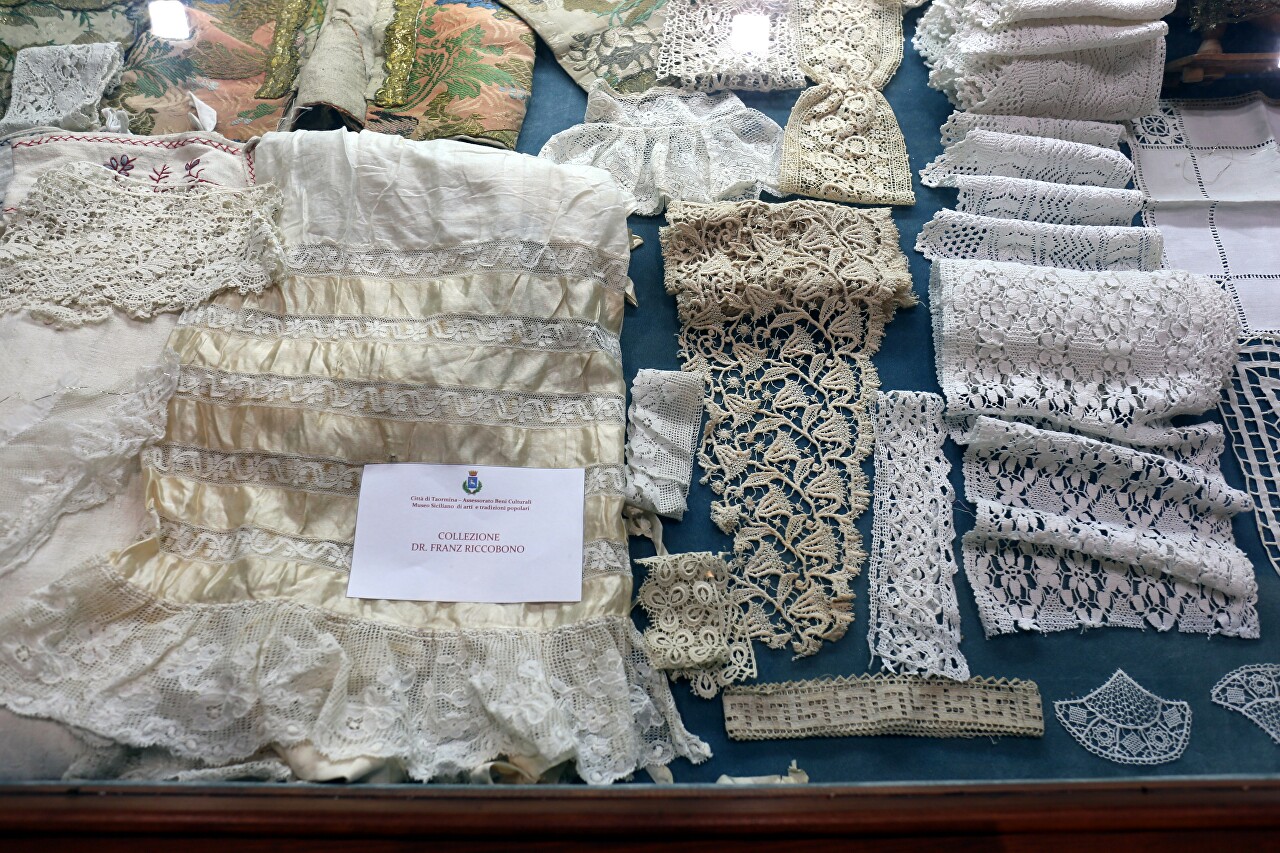
Sicilian hats and tools for making them.
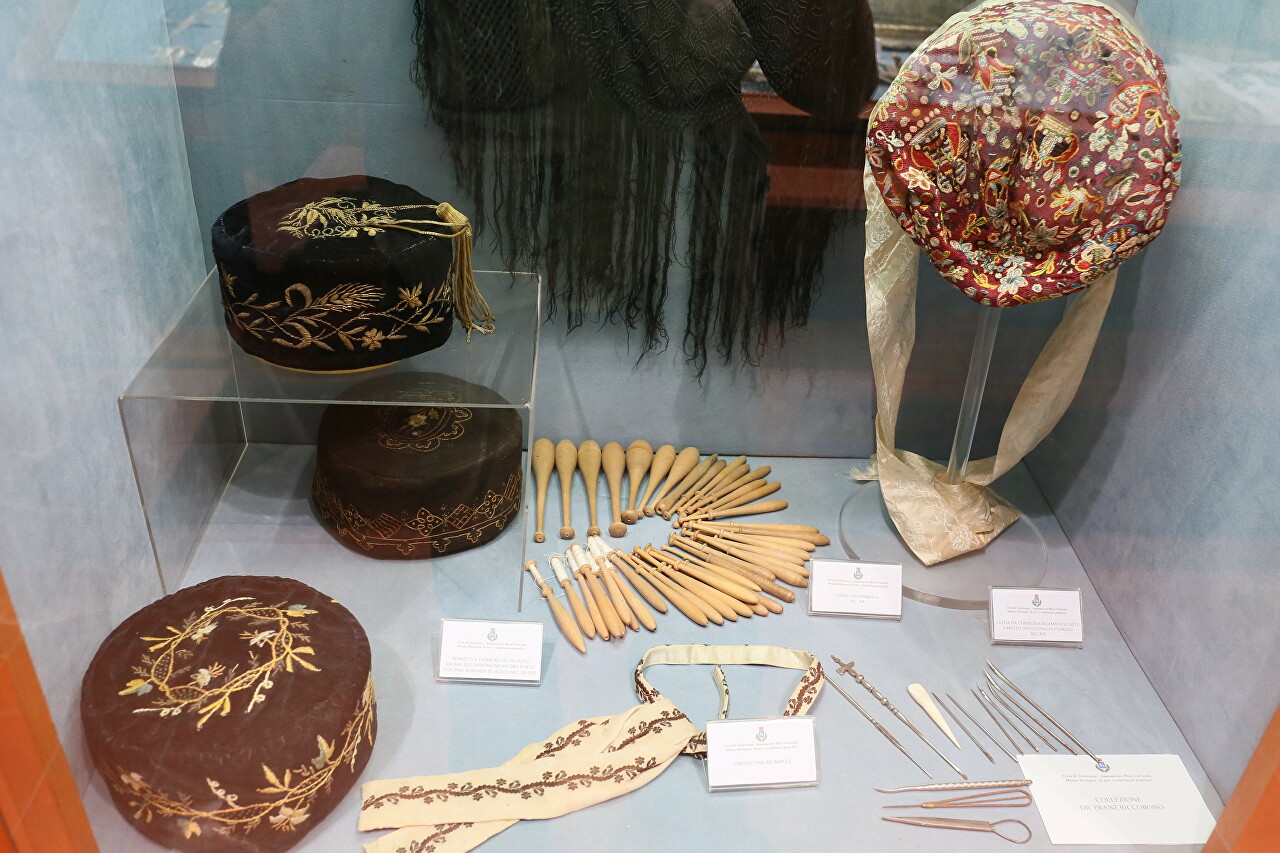
A corner with religious subjects. Bas-relief with the Madonna, medallions and glass vessels decorated with biblical themes.
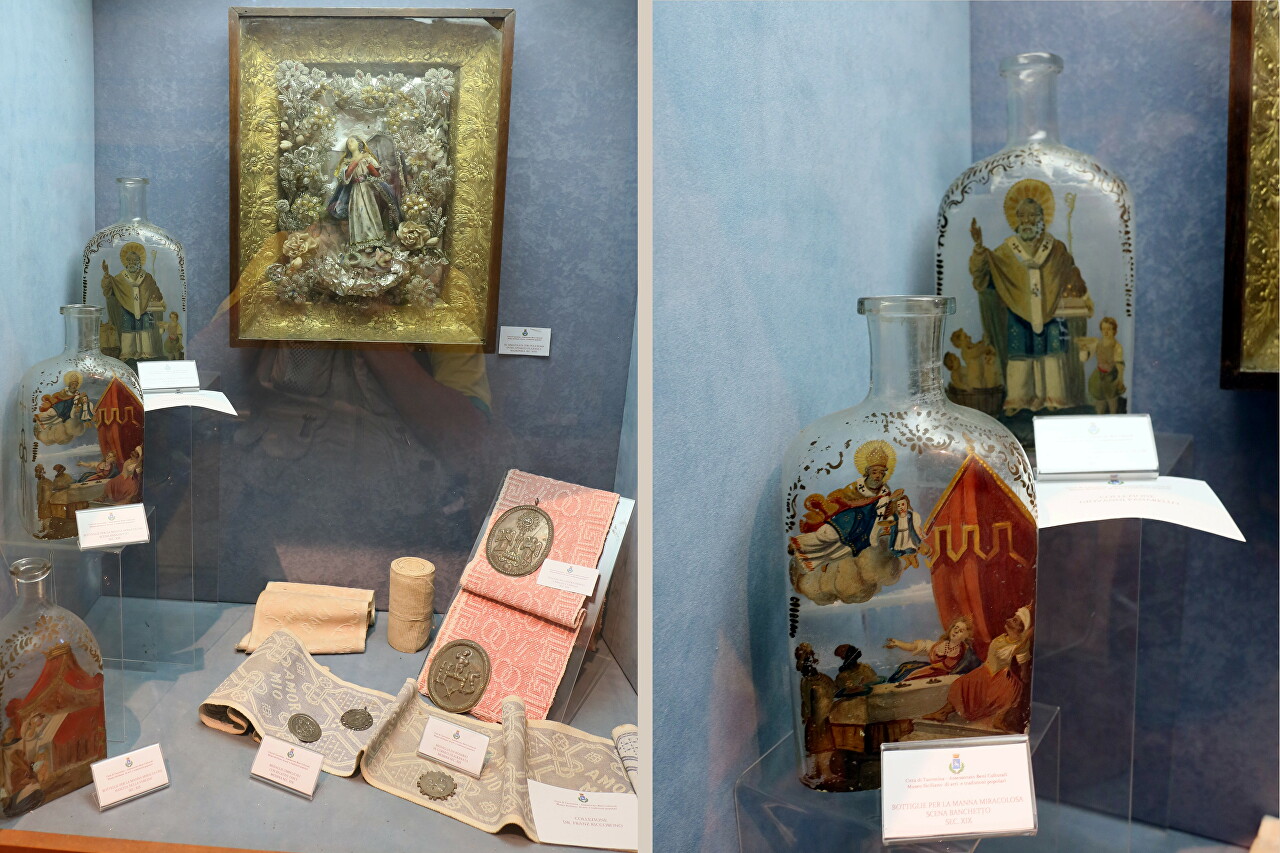
Wooden and metal crucifixes made by modern masters.
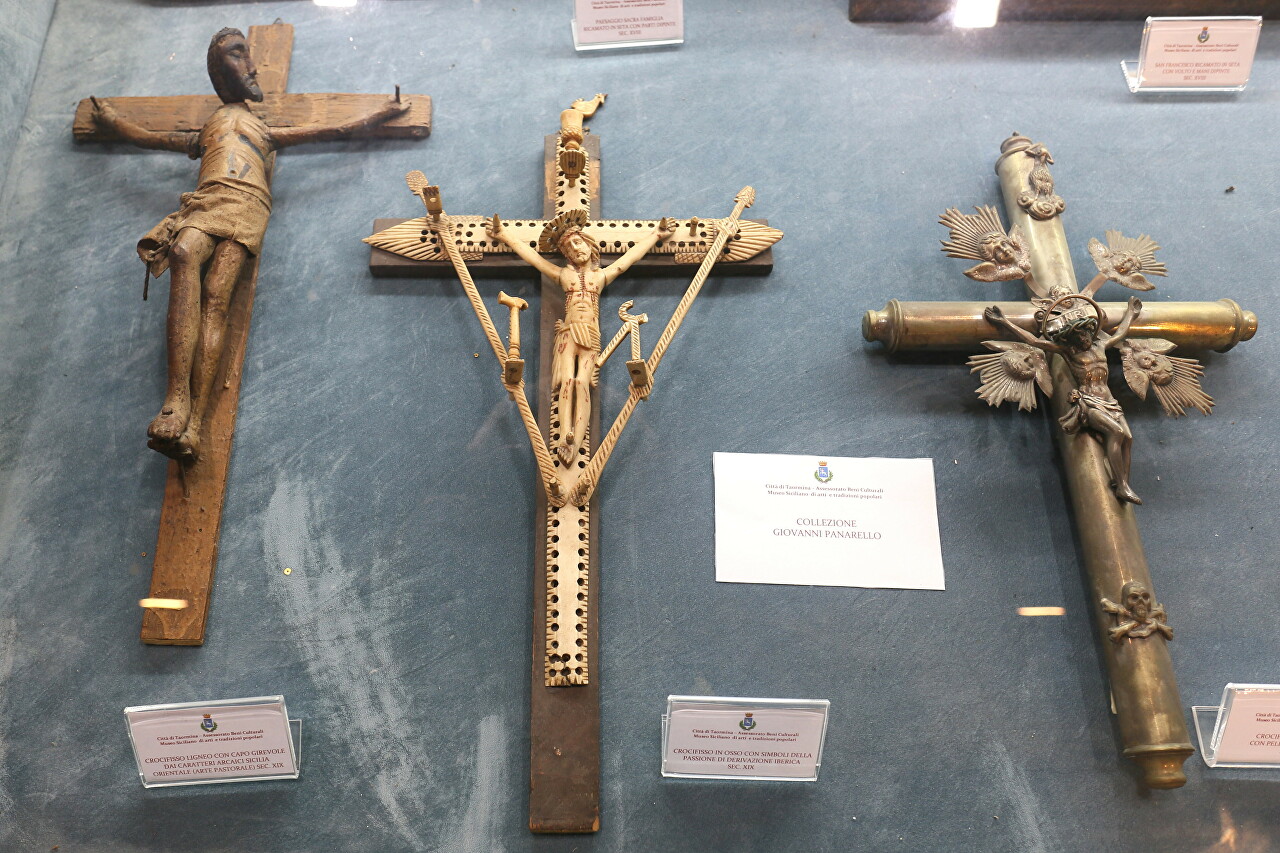
A collection of dishes with the image of fish, made in the 19th century.
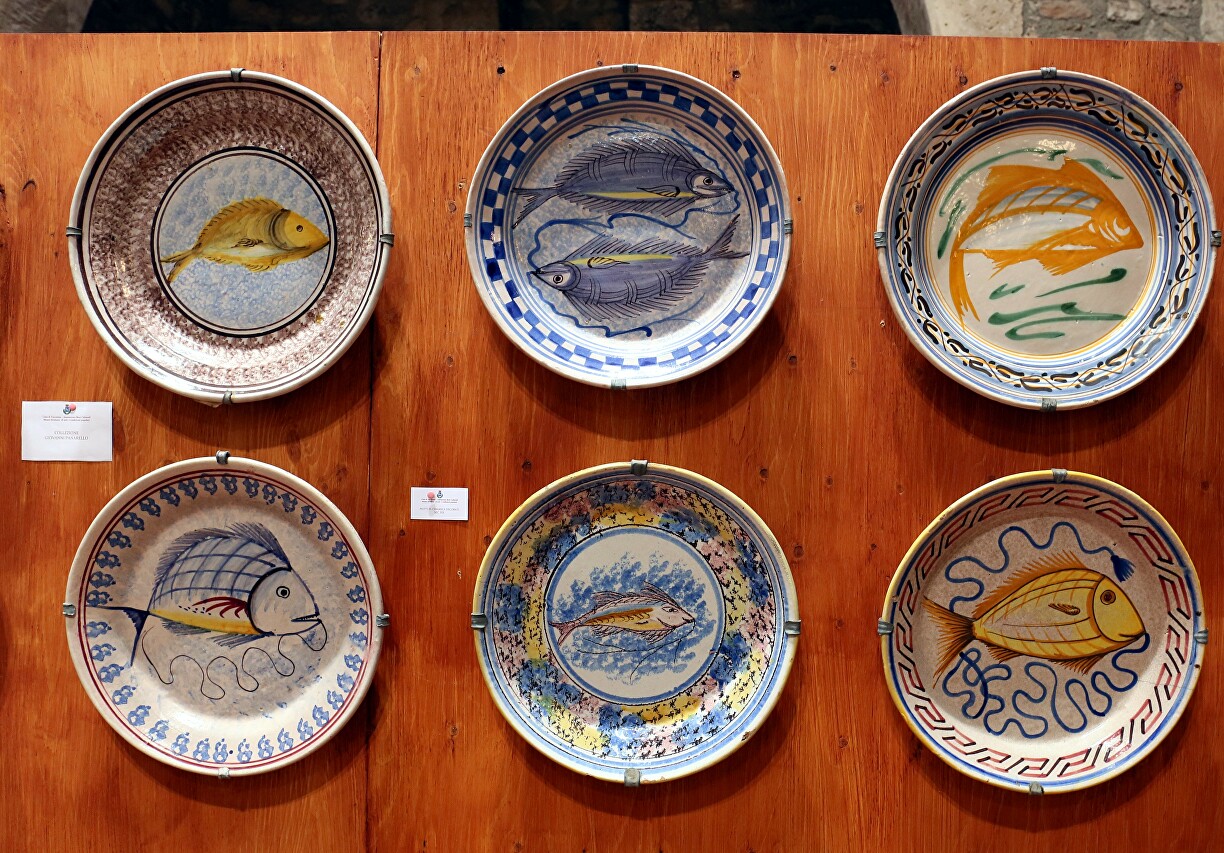
A storage cabinet with many drawers and doors located even at the ends, decorated with carved figures. The structure is made entirely of wood, even the door hinges and drawer handles.
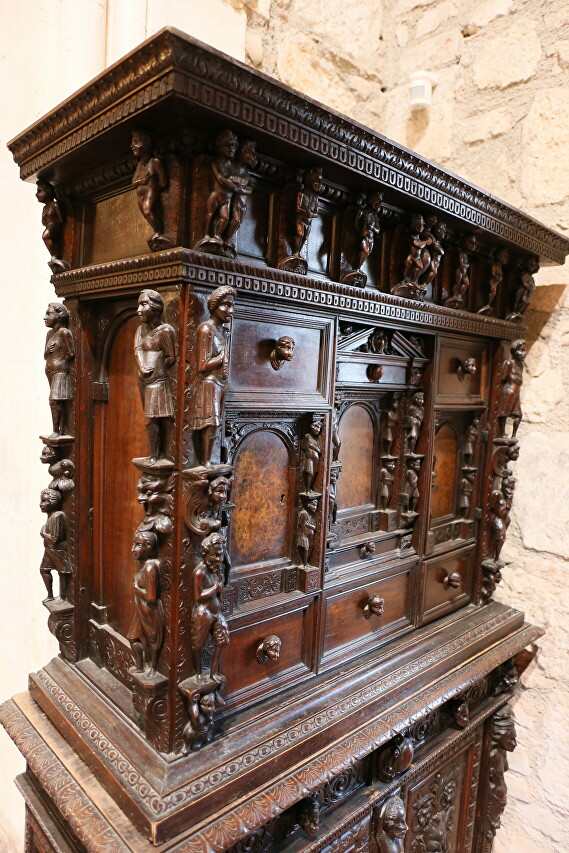
I stayed for a long time at the stand with small paintings depicting various events, I will tell you more about them in the next article.
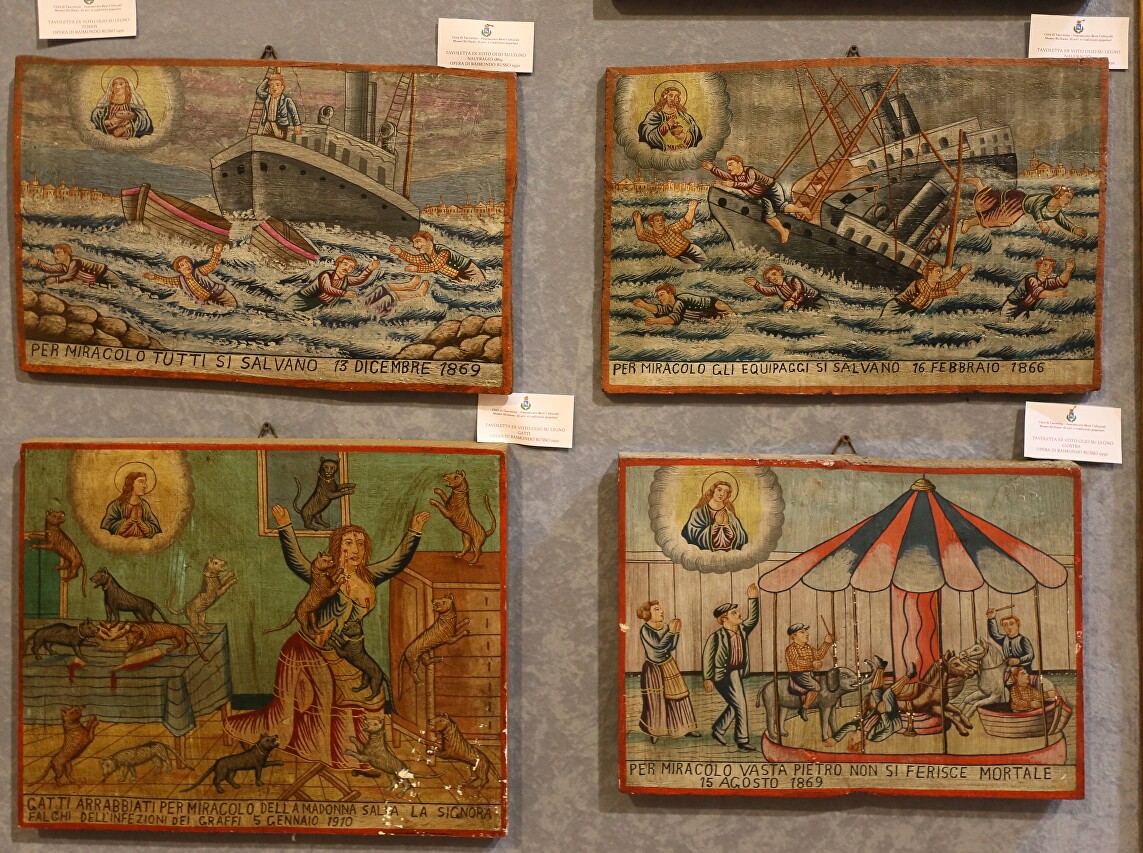
The Museum of Sicilian Art and Traditions is located on Viale Apollo Arcageta, a block north of Plaza San Antonino Abbate, it is open Tuesday to Sunday from 9: 00 to 13: 00 and from 16: 00 to 20: 00, admission is free.